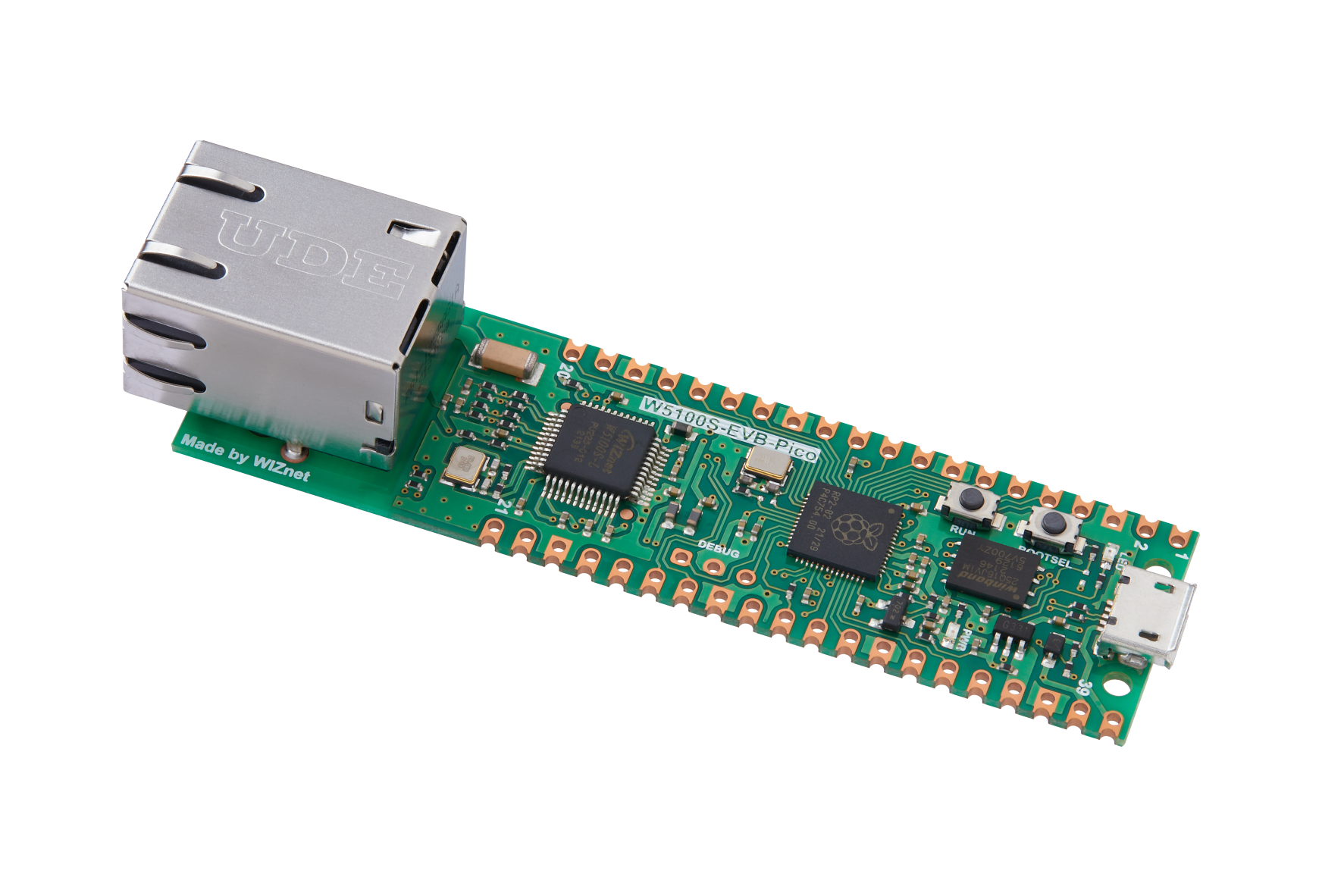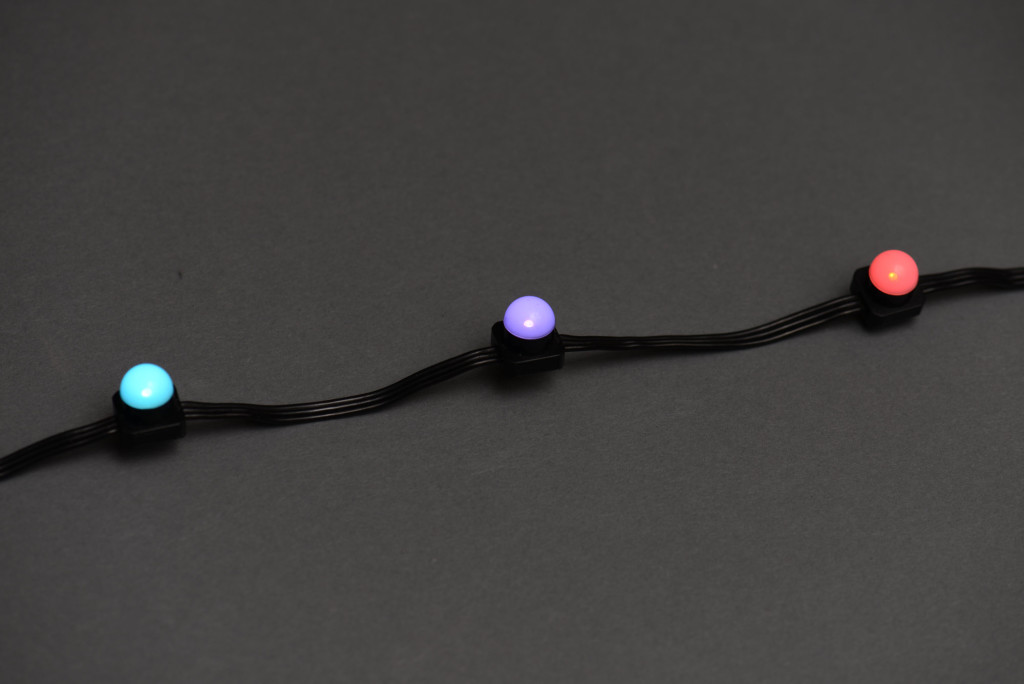Ethernet -> DMA -> PIO -> Pixels!
Back in the early 2000’s–at least a decade before there were Neopixels or WS2812b LEDs–Color Kinetics introduced flexible color changing LED

E1.31 -> Ethernet -> DMA -> PIO -> Pixels!
1: the development environment with a headless Raspberry_Pi 400.
2: the @WiznetTeam W5100S-EVB-Pico evaluation board connected to network. 3: my universal pixel adapter used to supply power and data to the pixels.
Back in the early 2000’s–at least a decade before there were Neopixels or WS2812b LEDs–Color Kinetics introduced flexible color changing LED string lights. Each string contained fifty RGB color changing nodes. Each node contained an RGB LED and a custom ASIC. The nodes were strung along at either 4″ or 12″ spacing along a three conductor cable. The cable connected back to a power data supply that powered the nodes and translated the light level data from either DMX-512 or Ethernet UDP packets into the proprietary protocol used by the nodes. Today we’re going to reverse engineer that proprietary protocol.
Branding
Color Kinetics is big into branding and trademarks. They call their RGB LED string lights iColor Flex, the ASIC inside each node is a Chromasic, and the protocol they use to communicate is called the Chromasic protocol. The biggest differentiators between all the different products are the color of light emitted, RGB or white, and the diameter of the node, 15 mm or 35 mm.
iColor Flex SL
Three iColor Flex SL nodes.
The original iColor Flex product was iColor Flex SL. Each node was a dot about 15 mm in diameter and contained a single RGB LED. These were available in eight different configurations by selecting from among the following options:
- Black wire and nodes or white wire and nodes.
- Nodes spaced at 4″ or 12″.
- Dome or cone diffuser.
- Clear or translucent diffuser.
The iColor Flex SL product ran from 7.5 V and was advertised as capable of producing 68 billion color combinations. Each node used three channels for control: one for red, one for green, and one for blue. A twenty foot leader cable extended from the first node in the string and plugged directly into a power data supply. The power supply connector was permanently attached to the leader cable.
iColor Flex SLX
The second product was iColor Flex SLX. Each node was a dot about 35 mm in diameter and contained three RGB LEDs. These were available in eight different configuration too except the choices for the shape of the diffuser were now dome or flat. These ran from 12 V, used three control channels, and came with an attached twenty feet leader cable that plugged directly into a power data supply.
iColor Flex MX, LMX, MX gen2, and LMX gen2
iColor Flex LMX nodes.
As RGB LEDs continued to get brighter, Color Kinetics refreshed their product line. The small nodes became iColor Flex MX and MX gen2. The large nodes became iColor Flex LMX and LMX gen2. In addition the large nodes now contained six RGB LEDs instead of three and ran from 24 V instead of 12 V.
Another big change introduced with these products was a detachable leader cable that could be shortened to fit the user’s application. The string of nodes now shipped with a short three foot pigtail that plugged into a leader cable that connected back to the power supply through a dongle. We’ll cover the dongle and leader cable in detail in a following section.






